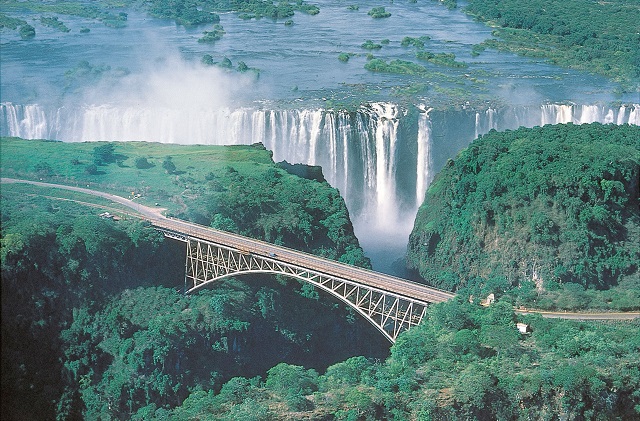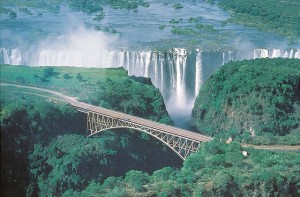
The Sunday News

Butler Tambo
TOURISM is one of the fastest growing industries in the world. In terms of global exports, it ranks fourth after energy, fuels and food, accounts for five percent of global Gross Domestic Product (GDP) and six to seven percent of global employment.
In both developed and developing countries, tourism has emerged as a major driver of economic and social development through generating foreign earnings, creating incomes, stimulating domestic consumption and creating employment for both low skilled and semi-skilled workers with a bias towards women and youths in both urban and rural areas.
This article is a continuation from last week where we looked at the policy environment around tourism sector in Zimbabwe, its contribution to the economy and therefore this week we look at why these noble goals have been negated in Zimbabwe and why tourists are shying away from our beautiful country. These factors were cited in the Visitor Exit Survey survey results released by ZimStat and the Ministry of Tourism and Hospitality Industry early this year.
High Prices of Zimbabwean destinations
In the Ministry of Tourism and Hospitality Industry Visitor Exit Survey (later to be referred to as the ‘‘survey’’) for the period 2015/2016 period it was noted that 63,2 percent of interviewed tourists would rather choose another destination to visit because of the high prices of products and services in Zimbabwe. The multi-currency system adopted in 2009, especially the use of the United States dollar is a huge contributory factor as visitors whose currencies were weaker that the US$ (eg those from South Africa, Botswana or Mozambique) found that their holidays to Zimbabwe were expensive because of currency differentials.
This has led to such countries as South Africa advertising Victoria Falls as if it were in their country and creating tourism packages around it, bringing in tourists via Livingstone in Zambia and these people do not even spend a cent in Zimbabwe as they even bring their own bottled water from Zambia and South Africa and after seeing the falls they go back to sleep in Livingstone which is way cheaper than the Zimbabwean side hotels.
The visitors found themselves being asked to pay a US rate for a third world product. Product providers have made the situation worse by retaining the high inflation period pricing models where high margins were the norm. The pricing regime makes it punitive for this market to patronise Zimbabwe by charging astronomical prices.
Differential pricing that saw the Zimbabwe tourism sector over pricing its tourism product has had adverse ramifications on the other anchor elements of the destination, particularly image. The astronomical rates levied on regional and international customers have rendered Zimbabwe uncompetitive.
Additionally, the very high landing fees costs and departure taxes levied by the Civil Aviation Authority of Zimbabwe were cited as a hindrance to many airlines which may be interested to enter the Zimbabwean aerospace.
“Harassment” by Police
Another growing source of negative perceptions on the destination from the survey was “harassment” of tourists by police. At least 43 percent of the visitors indicated that they will not take their next holiday in Zimbabwe because the supposed harassment that they received from the police during their stay in the country.
Concerns about police “harassment” have been raised in a number of fora and just a few weeks ago the country had celebrated that only four roadblocks would be mounted per province but this relief was soon quashed when Government explained later that what we thought were roadblocks were actually check points and these could be mounted anywhere anytime.
The police were allegedly charging visitors driving foreign registered vehicles in the country for not adhering to local rules which was against the Vienna Convention on Road Traffic of 1968 to which Zimbabwe is a signatory to. The attitude and practices of some police is therefore contributing to the unpopularity of Zimbabwe as a tourist destination.
The introduced Tourism Police Units in major tourist destinations that was made during the late 1990s in the country have totally been overshadowed.
The Ministry of Home Affairs need to take decisive corrective action about the malpractices of some traffic police otherwise the promotional efforts that are being carried out by tourism stakeholders will not yield the intended results.
Poor Infrastructure and other facilities
As many as 31,1 percent of the respondents in the ‘‘survey’’ mentioned poor infrastructure and other services as a reason for not coming back to Zimbabwe. The dilapidated road networks littered with potholes makes travelling very difficult especially for tourists that prefer self-drives. The rail system is almost non-existent with no reliable scheduled departures and very poor conditions and services on the trains.
Lack of connectivity between tourist destinations because of a lack of budget planes, good road and rail networks has also led to the country losing out on marketing of the less known tourist destinations outside of Victoria Falls, Great Zimbabwe and the Eastern Highlands.
Given that the tourists are charged United States dollars for services in the country the qualities of the infrastructure and facilities made the majority of the tourists feel cheated as some of the hotels are in a state of disrepair. Word of mouth is a strong mode of advertising in the tourism industry hence the negative sentiments expressed by the departing visitors will influence a large number of tourists who were considering Zimbabwe as their next holiday destination.
The proliferation of the use of social media by tourists on holiday has also meant that the negative perceptions of the visitors were distributed to millions of individuals around the world making the marketing and promotion of Zimbabwe a Herculean task.
In terms of tourism facilities, the absence of tailor-made financing for the sector has affected refurbishment cycles tourism facilities.
Efforts by Government to assist the private sector to upgrade their facilities by allowing duty free imports for capital goods used in the sector has been hindered by the liquidity crunch being faced in the country which has also led to high interest rates for loans and hence a large number of operators have been unable to benefit from the facility availed by Government.
“Harassment” at port of entry
The ports of entry give tourists their first impressions of any destination. With 14,4 percent and eight percent of the departing visitors mentioning “harassment” by Zimra and immigration officials respectively, it means that visitors’ negative perception of Zimbabwe is intensified the moment they enter into the country. This is a major disservice to the tourism industry as a whole which has been trying to reposition the country as a favourable holiday destination after experiencing negative publicity post-2000. The way tourists are searched and made to queue for long hours at such ports of entry like Beitbridge has created negative energy towards visiting Zimbabwe for holiday makers.
Expenditure
Zimbabwe is punctuated by too many leakages and virtually non-usage of a tourism satellite accounting system in the reporting of tourism’s economic impacts making it difficult to effectively trace expenditure by the tourists.
There seems to be a worrying disparity among tourism service providers on the number of people visiting destination Zimbabwe from the Asian market against what is spent by the same. The targeting of the Asian market seems to have been an exacerbating variable in this matrix since the market does not spend much yet it is high volume. High volumes that yield too little revenue are the Achilles heels of the tourism sector since they literally fly in the face of the ideals and precepts of sustainable tourism. Patrons on group packages negotiate for huge discounts on the hotel rates, and this naturally eats into the revenue. In addition, customers from the Asian market are very low spenders. Finally, most of the groups prefer to use the services of middlemen like tour operators and travel agencies meaning that almost everything is paid for in the home country of origin translating into unimaginable revenue leakages and little revenue coming to Zimbabwe.
In next week’s article, we will now look at what should be done to boost tourism in Zimbabwe.
-Butler Tambo is a Policy Analyst who works for the Centre for Public Engagement and can be contacted on [email protected] or +263776607524.




